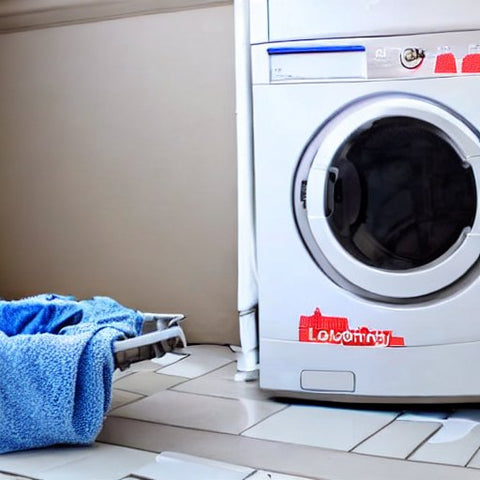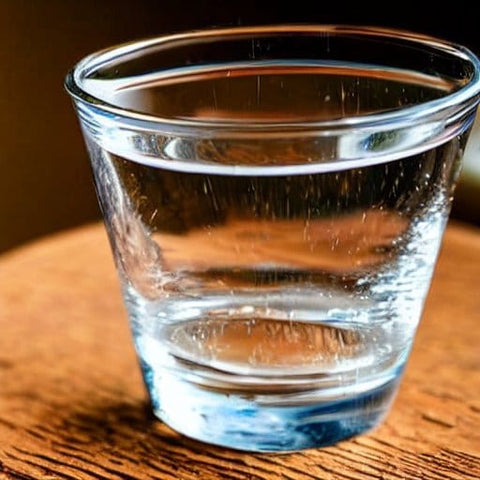What to Do If There Is Blood on Your Clothes
If you ever find yourself in the unfortunate position of having to deal with the issue of blood on your clothing, you may be wondering how to remove it. There are a few distinct approaches one might use to achieve this goal. Among them are the use of aspirin, white vinegar that has been distilled, ammonia and water, soap, and OxiClean.
Steps you can take to remove blood stains:
- Take prompt action: your chances of successfully eliminating the stain will improve in direct proportion to the speed with which you can treat it.
- Blot the area: Using a clean piece of white cloth or paper towel, blot up as much of the blood as you can in the affected region. Scrubbing or rubbing the stain may cause it to become more widespread and embedded deeper into the fabric. To prevent this from happening, avoid doing any of these things.
- Cold water: Water at a cold temperature Use water at a cold temperature to rinse the region in order to eliminate as much of the blood as possible.
- Detergent solution: Clean the stain using a detergent solution by first mixing a tiny quantity of detergent with cold water, and then using the solution to gently blot the spot. Avoid using hot water since it has the potential to permanently fix the stain.
- Salt: Blood stains that have been there for a while may be removed by applying a paste made of salt and cold water directly on the stain. Wait a few hours before washing the garments after allowing it to rest there.
- Hydrogen peroxide: Combine hydrogen peroxide and cold water at a ratio of 1 to 1, and then apply the solution to the stain. Because hydrogen peroxide has the ability to bleach certain textiles, you need to make sure that you test it first on a tiny, unnoticeable part of the fabric.
- Baking soda: In order to remove the stain, first make a paste out of the baking soda and cold water, and then apply it to the stain. Wait a few hours before washing the garments after allowing it to rest there.
- Enzyme cleanser: Make use of an enzyme cleaner that has been developed particularly for the removal of blood stains. Take the time to thoroughly follow the directions on the product.
- Launder the garments: After the stain has been removed, put the garments through a cycle in cold water. It is important to wait until the stain has been entirely gone before using hot water or drying the garments in the dryer.
Move quickly
Acting fast is the first thing that you need to do in order to remove blood stains from garments. Your chances of successfully eradicating the stain increase in proportion to the speed with which you treat it. If blood stains are allowed to remain untreated for an excessive amount of time, the stains may get set in the fabric, making it far more difficult to remove them.
Blot the Area
The next thing that has to be done is to soak up as much of the blood as you can. Use a clean white cloth or paper towel to blot up the blood, but be very cautious not to press or scrape the stain, as this may cause the stain to spread and get embedded deeper into the fabric. Before going on to additional treatments, blotting the stain will assist in removing as much blood as is feasible from the surface.
Use Ice-Cold Water
The next step is giving the region a rinsing with ice water. Utilizing cold water as a means of removing as much blood as possible from the garment and preventing the stain from becoming permanent is a good idea. Be careful to use cold water since hot water might cause the stain to become more permanent, making it more difficult to remove.
The use of soap and water
Blood stains are notoriously difficult to eradicate. The procedure of removal might be easy or difficult, depending on the kind of cloth being used. The good news is that there are a lot of natural techniques to get rid of blood stains.
After combining a trace quantity of detergent with some cold water, wipe the stain carefully with the resulting solution. Avoid using hot water since it has the potential to permanently fix the stain. The use of detergent may aid in the process of dissolving the blood and removing it from the cloth. You need to make sure that you use a detergent that is appropriate for the kind of material that you are treating.
If you do not have access to a washing machine, the most effective method for removing a blood stain is to soak the stained item in cold water for several hours. This will cause the stain to go away.
On the other hand, if your blood is dry, it makes things more difficult. It is advised that you make use of a powerful detergent. One solution worth considering is Tide's Ultra Stain Release Liquid, for instance.

Altering the garment such that it is worn inside out is still another tip. This will assist in removing the stain from the reverse side of the cloth. After that, one side of the garment may be cleansed with soap and water or a dish detergent made from plants.
One other effective method for removing blood stains is to use a paste made of salt and water. Granules of salt have an abrasive quality that makes them capable of removing stains. They may also be used in a speedy manner. When the paste has had enough time to dry, peel it off the discoloration.
The same thing happens when you spit. The most positive aspect is that spit is effective for removing minor stains. It has a digesting enzyme, which progressively breaks down the blood as it circulates through the body.
Hydrogen peroxide is another method that may be used. Even though it is an excellent oxidizing agent, this substance may ruin some types of cloth. Examine the label to see whether or not it may be used on the material that you have.
Enzymes are yet another effective method for getting rid of blood stains. They have the ability to degrade protein. However, they are also capable of wreaking havoc on delicate materials.
In conclusion, there are a variety of specialized goods available on the market today. Some examples of these products are detergents, enzymes, and enzymatic cleansers. These products are designed to remove certain kinds of stains, such as those caused by protein. It is essential to do a test in a concealed area before employing any of these products to see whether or not they are a secure option.
Both water and ammonia
Blood stains on garments may be removed using ammonia and water, which are both common household materials. The first thing you should do is clean the area with some ice water. This will assist to break up any protein deposits that have formed in the blood. In addition to that, the stench of ammonia will be removed.
If you attempt cleaning the stain with cold water and it does not come out, you might try cleaning it with hydrogen peroxide. This works well on new stains, however it is not recommended for use on colored materials.
Another method is to use a scraping tool, which is helpful for removing old stains that are very tenacious. For this procedure to work, you will need to have the appropriate protective gear on hand.

There is also the option of using an all-purpose spot remover. The stains left by grass, ink, and food may all be removed with the help of these products. They also do not need the solution to be rinsed out after use. Nevertheless, for your own safety, you should be sure to follow the instructions that come with the product.
If the blood stain is too big to be removed using the techniques described above, you have the option of using a specialized product instead. These items may be found at many retailers that specialize in home renovation. Before you use the product, examine a minute portion of the fabric to see whether or not it poses any health risks.
Applying a pre-treatment stain remover is one of the most effective methods for removing a blood stain from a surface. There are a lot of different ways that you may use these goods, but you have to be sure to follow the directions first.
You may make an all-purpose solution by combining water, ammonia, and laundry detergent in proportions that are equal to one another. These components may be used on either a soft or a hard surface, depending on your preference. When using the detergent on silk, use extreme caution.
You might also try a solution that consists of cornstarch and ice water. This will work the best on stains that are on white sheets or other items of clothing that are light in color.
Salt
You may mix a paste out of salt and cold water and apply it to blood stains that have been there for a while or that have been set in. Wait a few hours before washing the garments after allowing it to rest there. The use of salt may absorb the blood, and the stain will begin to disappear.
Hydrogen Peroxide
Apply a mixture of hydrogen peroxide and cold water that has been mixed in equal parts to the stain. Because hydrogen peroxide has the ability to bleach certain textiles, you need to make sure that you test it first on a tiny, unnoticeable part of the fabric. Hydrogen peroxide is an excellent stain remover that may assist to break down the blood and pull it out of the fabric. If used immediately after the stain is made, it is possible to get the best results.
Baking Soda
Apply a paste made of baking soda and cold water to the spot where the stain is located. Wait a few hours before washing the garments after allowing it to rest there. Baking soda has the ability to absorb the blood and eliminate the stain it leaves behind.
White vinegar that has been distilled
To remove blood from clothing, there are a few simple measures that may be taken. Vinegar may be used in one approach. This is a natural stain remover that works well for removing stains from garments as well as other objects found around the home. Vinegar has powerful dehydrating characteristics, which allow it to remove blood spots from fabric.
The use of hydrogen peroxide is still another choice. On the other hand, it has the potential to irritate the skin and should not be used on sensitive materials. It may also change the color of some materials, so verify the instructions provided by the manufacturer before using it.
Another popular option is to use white vinegar that has been distilled. This is an excellent solution due to the fact that it is not pricey and has the necessary cleaning power that you want.

Baking soda is yet another effective product that may erase stains. Create a paste by combining the powder with a little amount of water. After applying the paste to the affected area, wait a few minutes before attempting to remove the stain. After rinsing with clean water, dry with a clean towel.
A solution made of white vinegar may also benefit from having a trace quantity of lemon juice added to it. Because of the acidic nature of the solution, the stain should become easier to remove. An other option is to combine equal parts salt and ice water in a separate container. You are free to use essential oils in the combination if that is something you would want to do.
Using toothpaste is the third approach that may be used. Baking soda is an ingredient found in most toothpastes. Although it does a better job of removing blood stains than other treatments, this one takes a little bit more time.
Using a mixture of liquid dish detergent and vinegar is the most effective way to remove blood stains from fabric and other surfaces. This technique works particularly well on fresh blood stains.
In addition to that, blood stains may be removed from garments by using oxygen bleach. It is a safe alternative to chlorine bleach that will not affect the color of the fabric. Additionally, it has a low impact on the environment.
OxiClean
There are a number of different items that might be of use when attempting to remove blood from clothing. However, not all items are developed on an even playing field. Some products can bleach your garments, while others shouldn't be used on delicate materials since they might damage them. Before trying to get rid of a blood stain, it is essential to look at the label that comes attached to any new products you buy and see how they should be cared for.
Utilize an enzyme cleanser that has been developed particularly for blood stains. Take the time to thoroughly follow the directions on the product. Enzyme cleaners are designed to break down the protein found in blood, and as a result, they have the potential to be highly successful in removing blood stains from fabric.
One of the most effective treatments for eliminating stains is called Oxi Clean, for instance. Hydrogen peroxide and baking soda are the components that make up this product. The components eliminate stains that are composed of protein, such as blood.
However, it is essential to bear in mind that the chemicals that are employed in OxiClean have the potential to ruin some types of clothing. You should choose an alternate product to utilize if the fabric you are working with is wool, silk, or a combination of the two.
Laundry detergent is another another substance that may effectively remove blood from surfaces. Your neighborhood grocery shop likely has a product that lives up to expectations. Sheets, shirts, and towels may all be cleaned effectively with a good laundry detergent if you use it. Before putting the product to use, examine the seam that runs down the inside of your garment to determine whether or not it poses a threat.
Additionally, there are solutions on the market that are designed expressly for the elimination of blood stains. These items come at a high price, but they may provide the desired results. Shirts, towels, and linens may all be treated with these materials if they have blood stains on them.
If there are any blood stains on your linens, washing them in cold water should get rid of them. You might also try sprinkling salt on the stain, allowing it to rest for approximately ten minutes, and then soaking the affected area with warm water.
There is also the option of using white wine to remove the discoloration. White wine may be used to erase stains, but you should exercise caution while doing so since it is also frequently used for medical reasons.
Aspirin
What exactly is the aspirin and what are the steps involved in putting someone to sleep? To begin, you need to be aware that the aspirin and other medications will most likely solve the problem, even if they will only work by themselves. You could also want to think about making use of an alternate solution such as hydrogen peroxide, a good old-fashioned soak, or a few drops of chlorine bleach. These are all examples of potential options. If you have the means to do so, hiring a professional is likely to be in your best interest. Regardless of the option you choose for, the fact that you get to retain that sharp new shirt is unquestionably the finest part. On top of that, you can genuinely enjoy yourself while you're doing it.
It's possible that aspirin and the like are difficult to sterilize, but there are a few other options that are less risky and will achieve the same results. In addition, as you would anticipate, aspirin has a long history of usage as a medical therapy for a wide range of illnesses. This treatment spans thousands of years. Aspirin is one of the most effective pain relievers available, on the off chance that you were not previously aware of this fact.
The procedures that were discussed earlier are, without a doubt, not the only ones available for eliminating that blood stain; nonetheless, they have been shown to be the most successful. Aspirin may be purchased without a prescription and, to top it off, it's not too expensive. Make it a point to get as much information as possible before making a purchase by doing research and asking inquiries.
Hints & Suggestions
- Before you make any attempts to get rid of the stain, you should always check the care label that was attached to the item of clothing. There are certain types of cloth that can need a specific treatment, or they might not be able to tolerate certain types of cleaning solutions.
- Before applying any cleaning solution directly to the stain, you should always test it on a tiny, inconspicuous area of the cloth first.
- It is important to wait until the stain has been entirely gone before using hot water or drying the garments in the dryer.
- If the stain is still there after you have tried to remove it, you may either try to remove it again using the same approach or try removing it using a new method.



























































Dejar un comentario